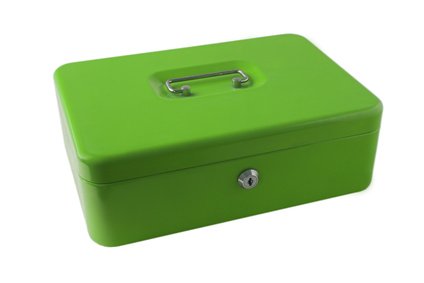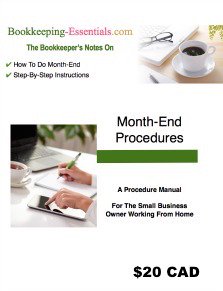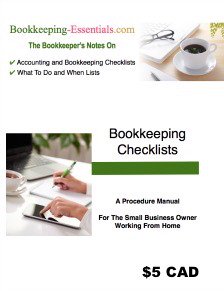
How to Manage Your Petty Cash Fund
by L. Kenway BComm CPB Retired
What You'll Find In This Chat

- Better alternatives
- How to manage your petty cash
- Bookkeeping entries -two options
There are two ways to manage a petty cash fund. I explain both, along with the journal entries in this chat.
If possible, it is best to NOT have a
petty cash fund as it is so easily abused. A better alternative is to
have employees submit expense reports for reimbursement or issue company
credit cards with limits.
Advertisements
Let's look at why you may want to establish a petty cash fund ? ... And what procedures should you put in place?
The main reason is convenience ... a petty cash fund for minor expenses is convenient. There could also be some cost savings related to the administration expenses (including labor) associated with writing a cheque/check for small amounts. This is an example where it makes sense to break the internal control principle of paying all expenses by cheque/check.
However, with that said, I still prefer to use a low limit credit card rather than a petty cash fund. Okay. With that covered, here is how to manage your petty cash:
- It is best if one person is in charge of the petty cash box. The box itself should have a lock and key.
- When someone takes money out of petty cash, a voucher should be filled out and placed in the petty cash box.
- Once the purchase is made, the receipt should be attached to the voucher and any change returned to petty cash.
- Your petty cash receipts should be stamped with a "posted" stamp when they are entered into the accounting system. You might want to also keep a petty cash log, but this is optional. Personally, I prefer to enter the vouchers into the accounting software on a timely basis and print the G/L register as my log.
- Each time a reconcilation of petty cash is done, remove the "posted" receipts from the petty cash box and attach all the receipts to your petty cash reconciliation ... then replenish the fund. If you've gone paperless and scanned the receipts, you still need to keep your originals in Canada.

LET'S CHAT ABOUT ...
Petty Cash Bookkeeping Journal Entries
There are three basic bookkeeping entries for petty cash:- Setup petty cash
- What you received (debit) - petty cash funds ... Where it came from (credit) - a cheque written from the bank account.
- Record petty cash expenses & replenish petty cash
- What you bought (debit) - numerous supplies or services ... Where it came from (credit) - the petty cash box via funds from your bank account.
- Increase petty cash
- What you received (debit) - more petty cash funds ... Where it came from (credit) -a cheque written from the bank account.
Petty cash is best tracked in a separate account in your G/L. Disbursements should be recorded before the end of your fiscal year ensuring all expenses are recorded. Best practice is to replenish the fund to its approved amount each time you reconcile the box.
Here are the bookkeeping entries:
(1) To setup your petty cash fund, write a cheque and code it:
Debit (Increase) Petty Cash (current asset account on the balance sheet)
Credit (Decrease) Cash in Bank (current asset account on the balance sheet)
This initial setup amount is sometimes referred to as your float. Remember this is petty cash so by definition the float amount is usually $100 or less.
(2) To record petty cash disbursements, use the "write cheque/enter expense" function in QuickBooks®. You should have vouchers AND receipts for EVERY disbursement and each receipt needs to be entered individually NOT as a group ie. do not enter one line for the total amount of receipts:
Pens - Debit (Increase) Office Supplies (expense account on the income statement)
Stamps - Debit (Increase) Postage & Delivery (expense account on the income statement)
Box of photocopy paper - Debit (Increase) Office Supplies (expense account on the income statement)
GST/HST* Payable - Debit (current liability on the balance sheet)
Cash Short - Debit (Increase) Cash Short or Over (expense account on the income statement) OR Cash Over - Credit (Increase) Cash Short or Over (expense account on the income statement)
For the last line of your entry, you have two options ...
OPTION ONE - To record expenses AND replenish petty cash at the same time, finish with this entry (write a cheque). ***This is the "correct ... most often taught in text books" way to do petty cash.
Credit (Decrease) Cash in Bank (current asset account on the balance sheet) if you ARE replenishing (exchanging receipts for cash)
OPTION TWO - To record expenses NOW and replenish petty cash LATER, finish with this entry (do not write a cheque). ***This is not the "correct - most often taught in text books" way to do petty cash but of course ... it's the method I prefer.
Credit (Decrease) Petty Cash (current asset account on the balance sheet) - If you use QuickBooks®, make the entries using Write Cheques so that your sales tax calculates properly. If you take a peek in the petty cash register, under this method, you will always know what your balance is without having to continually recount the cash or add up your vouchers to see if you have all your vouchers and/or receipts. Remember to stamp "posted" on receipts entered into the register so you don't enter any twice.
*GST/HST is a value added sale tax in Canada. If you are not a GST/HST registrant, book the tax to an "expense type" of account on your P&L. If you are using QuickBooks®, it will know how to book your sales automatically based on your initial setup.
(3) To increase your petty cash fund float ... or replenish petty cash if you used the second option above, write a cheque and code it:
Debit (Increase) Petty Cash (current asset account on the balance sheet)
Credit (Decrease) Cash in Bank (current asset account on the balance sheet)
If your cash is over or short, select the appropriate line to enter in the second bookkeeping entry. If you are balanced, you will not have a cash over/short in your journal entry.
In QuickBooks®, the petty cash account would be setup as a BANK type not an other Current Asset type ... to make reconciliations easier. Click here to see how to enter your petty cash vouchers into QuickBooks®.

It's been great chatting with you .
Your tutor Lake
QuickBooks® is a registered trademark of Intuit Inc.
Bookkeeping Essentials > Small Business Accounting > Petty Cash Fund
Home > Bookkeeping Entries Index > Petty Cash Journal Entries
Enjoy A Tea Break With
Me Today. Let's Chat!
Use the search feature to quickly find the
information you're looking for.
Join Me On Facebook
Help support this site by "liking" me! Here's where I post current information.
Listed Under Websites NOT Local Business.
This website is NOT associated with the business operating in Bonnyville AB.



